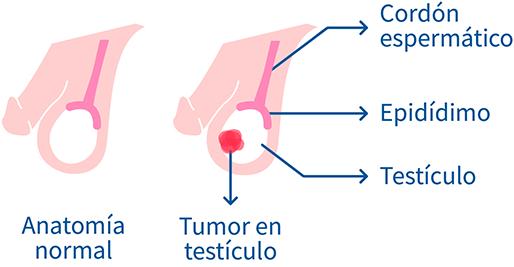By clothing-bag, 24/03/2022
I have a lump in the testicle, what can it be?
The testicles are responsible for the production of sperm and the synthesis and secretion of male hormones. Although it does not have to happen, it is possible that the testicles increase in size or that the man has the sensation of a certain heaviness in the scrotum.
If, for example, the liquid accumulates around the testicle and inside the scrotal sac, we would speak of a hydrocele having formed.
On the contrary, if the veins that supply the testicle dilate and produce a varicocele , it can also be accompanied by an enlargement of the testicle.
Another cause of the appearance of a scrotal mass is the hematocele, which responds to an accumulation of blood in the scrotum. But orchitis also causes inflammation of one or both testicles due to an infection. Men with a spermatocele have cyst-like masses.
The most frequent symptom of testicular cancer "is the presence of a normally unilateral and often painless testicular mass," explains Victoria Gómez Dosantos, head of the Urology Service Section at Ramón y Cajal Hospital , to CuídatePlus. This type of tumor is the most frequent in young men, between 20 and 34 years old, although in adult men it is estimated that it affects around 1%, and has very high cure rates - above 95%. -.
Testicular self-examination, weapon against cancer
Since there are no effective prevention measures and with the aggravating circumstance that it affects young people, diagnosing it as soon as possible is essential. How to do it? Teresa Alonso , scientific secretary of the Spanish Society of Medical Oncology, explains that performing a testicular self-examination to detect the presence of changes in size, or of masses or nodules in the testicle can help advance detection.

Therefore, it is a matter of recommending a periodic self-examination in the image and likeness of what women do in their breasts to detect possible changes and as a potential weapon for early diagnosis of cancer.
warning signs
In fact, the vast majority of testicular tumors are diagnosed precisely because the man or his partner has detected the appearance of a lump, adds Alonso. When testicular cancer appears, it does not usually cause pain, bleeding or any striking symptoms.
Fernando Lista, head of the Endourology Section at MD Anderson Cancer Center Madrid, details that the most important thing is the increase in volume or the feeling that a painless mass has appeared in the testicle. There may also be a feeling of heaviness in the scrotum or a dull ache in the lower abdomen, groin, scrotum, or testicle.
“It is a feeling that there is something that does not have to be there, perhaps you can notice that underwear or clothes in general are smaller. We men do not tend to notice or make explorations. The general symptom is that the testicle has changed in size, but sometimes those lumps are so small that if you don't explore it you won't notice it.
That is why at the moment in which any testicular abnormality is noticed, it is very important to go to the doctor to assess the cause of that alteration. "Most of the consultations will not have any pathological diagnosis, but it is necessary to convey to men that it is important to consult early and not wait for it to grow or be large," advises Gómez.
Do not forget that testicular cancer mainly affects young men, so do not get carried away by fear or lack of time and consult if a lump appears or changes in the morphology of the testicle.
How to explore the testicles?
The American Cancer Society recommends performing this self-examination once a month, especially after puberty and if there are risk factors for developing testicular cancer. This evaluation should preferably be done after showering since the skin of the scrotum is more relaxed and in front of a mirror.
Each testicle should be palpated separately, keeping the penis apart. To perform palpation, the testicle must be held with one hand and palpated with the other to determine if there are nodules or an increase in size, morphology or consistency. “Doing it periodically helps to identify any changes. It is normal to notice that one testicle is somewhat larger than the other”, explains Alonso.
Nor should we be alarmed if we detect that the testicles are not uniform or “detect a small cord -the epididymis- , something anatomically normal. This exploration should not be painful.
Testicular Cancer Risk Factors
Testicular cancer does not usually give symptoms, unless it is already an advanced disease with metastases that usually shows up with back or abdominal pain. Self-examination helps precisely to detect if there are alterations in the testicles or scrotum. And it can be especially helpful to detect a relapse after treatment of this tumor but also in patients with risk factors for developing this cancer, such as:
Related Articles